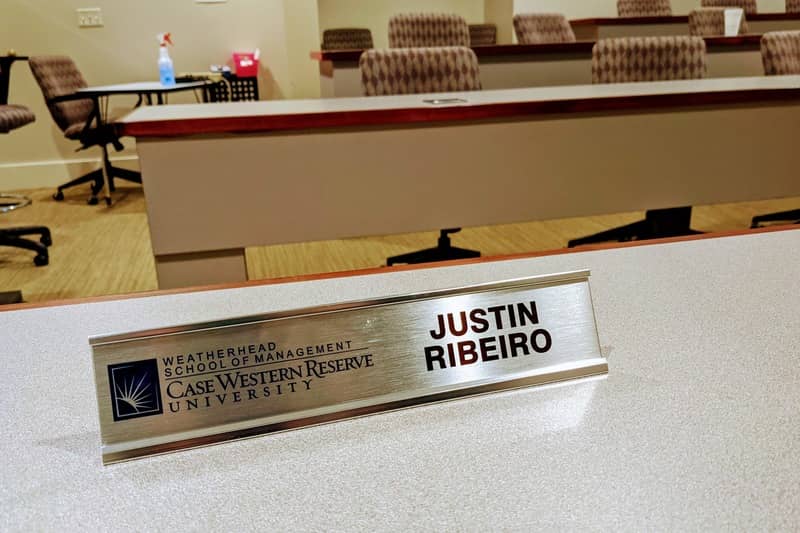Walking from the United lounge to the gate as boarding had begun for my outbound flight, my mind registered neither person nor protocol as I strolled to the gate. If it wasn’t my group I’m sure someone would yell at me was at best a passing concern as my phone tapped the scanner. I had more important fixations, the unfinished paper deconstruction burning in my mind and the hot laptop reminding me as it lay against my hip as I walked briskly to my seat.
No one tells you at the beginning of the doctoral program that in very little time your life will be consumed by the spare hour deconstruction—the task of reading, identifying, and breaking down academic papers for both learning and writing purposes. An hour seems at odds between the task and seemingly endless pages of complicated and at times very obtuse academic papers, but scholars do just that.
I, however, am not a scholar. I am a scholar in training who on a very good day can write up a decent deconstruction in about an hour and a half. To put that into perspective when I started three months ago such an effort would take me the better part of a day. The second day was mostly second guessing and questioning why I had done this to myself.
But no more—early mornings, lunch breaks, doctors offices—they are all now moments to deconstruct papers and feed my research journey. This flight would be no different and as I took my seat I popped the laptop lid open and for the next five hours, I continued my quest to deconstruct unabated.
It wasn’t until the flight landed, my mind a swirling mess of theories, that I heard a cheerful “Justin!” from my classmate Dalana, who had been sitting in front of me the entire flight. Shocked and confused, I apologized for not saying hello when I had boarded the plane. She laughed; she had not noticed me either, as she spent the entire flight doing deconstructions.
***
The second in-person residency can be summed up as a review of skills and iterations. Before arriving there were meetings—advising, virtual class sessions, team meetings—all of which dovetailed to a large amount of work that had to be completed. The writing varied widely from revisions to my research frame and question, a new introduction draft, coaching interviews, slide decks and concept explainers, an abstract situational map, and the start of my literature review. All of these various drafts and writings needed reviews, which then required more revisions, and more reviews.
While I had been successful in making those deliverables, to say I was exhausted arriving to discuss these items would be an understatement. Strolling into the lobby on the first day the cappuccino in my hand would classify less as a cappuccino and more of pure jet fuel espresso in a failed attempt to buy some alertness. While the barista had questioned my sanity of such a terrible order, my general immunity to such coffee-based measures was again on display as I was at best fuzzy as the residency kicked off.
I could feel the drag in my voice on that first day, the slowness in some responses and in the connective tissue of theory and ideas. In normal circumstances I would not allow for this scenario; I’d travel earlier and build in more lead-time preparation. This scenario of course is not normal; I’m juggling responsibilities at work and with family while putting in 40 hours of research study into my week. Time to say the least is short, sanity at a premium.
I am not the only one in this position; the program is full of people in similar circumstances. As this second in-person residency quickly proved that develops a certain comradery within our social group identity—Ashforth & Mael, Tajfel, Turner!—the reading is sticking. There isn’t a level of competition I had felt in my master’s program so long ago, everyone is really pulling and helping one another. Conversations at lunch trade ideas around research and help refine concepts; professors and advisors laugh and joke freely and are engaged in constructive conversations that are helpful and insightful.
Over the course of the three day residency I can’t say I felt comfortable. Like the first residency I felt somewhat out of place within this new world but at least I had a more solid means to hold my balance even when I stumbled during this residency. Classroom sessions and hallway conversations felt more at ease once I clicked into a groove and while I can’t say for certain I suspect that the level of discomfort I feel just comes with the territory.
No one said it would be easy. As a matter of fact, everyone said it was going to be hard and only get more difficult as time goes on. So far, so good by that measure.
The second residency at its close, I sat alone in the wide open pavilion of the Dively Building on a Saturday night pondering the state of things. I reflected in the quiet silence passing glances across papers and laptop that lay scattered across the coffee table. Like the start, the end was crossed with exhaustion, my head resting in my hands under my bristled chin, the five o’clock shadow firmly set upon my face.
A security guard broke that silence. “I didn’t know any one was still here, you doing alright?”
Weary, I cracked a smile and lifted my head. “Oh fine, just deconstructing this paper.”


